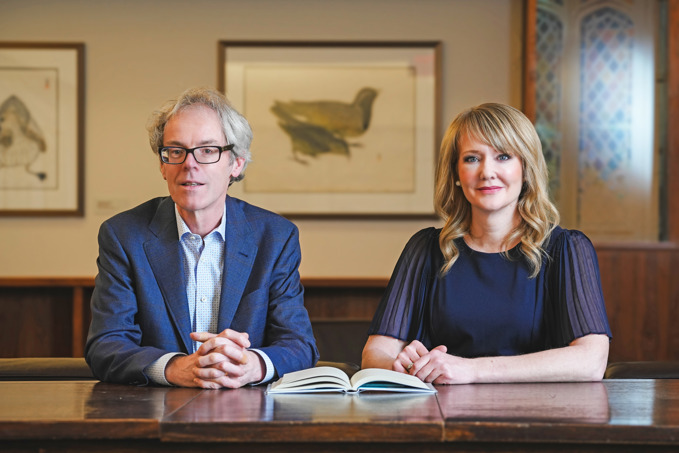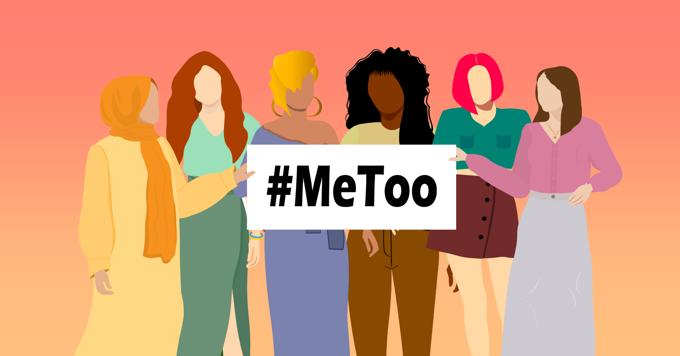Most of us will have approximately 12 jobs in our lifetime. And with each one, a new leader. Some will motivate us. Others will simply manage us. But a rare few will do something more: make us believe in the work, and in ourselves.
These are purpose-driven leaders. And in a world defined by disruption and uncertainty, we need them more than ever. Yet despite growing belief in the power of purpose, few leaders know how to bring it to life.
That’s where Ivey Business School faculty Dusya Vera and Oana Branzei come in. Informed by two years of rigorous research and dialogue with leaders across sectors, their Purpose 3.0 framework offers a pathway for leaders not only to articulate their purpose but also to weave it into the fabric of their organizations – building stronger and more resilient businesses in the process.
And it all starts with one question: How do you define purpose?
The “why” behind every great leader
Purpose may be one of the trendiest buzzwords in business today, but as Branzei and Vera remind us, it’s hardly a new idea.
“Purpose has always played a role in humanity,” explained Branzei, the Paul MacPherson Chair in Strategic Leadership and Professor of Strategy & Sustainability at Ivey. “We’re only now beginning to recognize its strategic importance in business.”
Often seen as abstract or nebulous, purpose is, in fact, deeply practical – it’s the reason for being that defines a person’s “why.” More than basic goals, it’s the underlying intention that gives meaning to what an individual, organization, or system does. And while purpose has always mattered to strong leadership, it becomes indispensable in times of crisis.
“Geopolitical tensions, sustainability challenges, and persistent inequality have created what many describe as a global polycrisis,” said Vera, Executive Director of the Ian O. Ihnatowycz Institute for Leadership and Ian O. Ihnatowycz Chair in Leadership. “In such times, when society seems to have lost its collective ‘why,’ people need more than a mission statement to follow. They need to believe their leaders, and their work, are contributing to something greater.”
Although some critics still dismiss purpose as a “soft” ideal, research shows that its impact is tangible. When people feel connected to something larger than their job description, purpose becomes the invisible force that aligns teams, fuels innovation, and sustains performance.
But before organizations can realize those benefits, leaders themselves must first define their purpose.
Purpose 3.0: From having to doing
That’s where Branzei and Vera’s Purpose 3.0 framework comes in. Developed in concert with Ivey’s signature Leader Character framework, it helps leaders uncover their purpose through the lens of character, looking at character-infused purpose and how all character dimensions support one’s purpose. But rather than treating purpose as something to be found and set aside, it reframes it as a dynamic practice of leadership.
A key part of that practice is treating purpose not simply as a noun, but as a verb.
“Purpose has too often been treated as a destination,” said Branzei. “In reality, it’s a journey. Great leaders don’t just define their purpose once; they live it, revisit it, and let it guide the decisions that matter most.”
Purpose 3.0 captures this evolution through three interrelated facets that turn purpose from intention into action:
- Finding Purpose: The ability to articulate one’s purpose, recognizing it’s not a single revelation but the start of an ongoing journey.
- Holding Purpose: Understanding purpose as stewardship – something leaders protect, nurture, and keep alive within their organizations
- Applying Purpose: Turning purpose into action. True leadership means bringing purpose to life through choices, culture, and impact.
While seemingly straightforward, the researchers note that living them is far more challenging in practice.
“Many leaders can articulate a compelling purpose,” said Vera. “But holding onto it through uncertainty – keeping it as your North Star when the path ahead is unclear – requires deep character and conviction. Those moments test not what you believe, but how strongly you believe it.”
Every purpose has a beginning
Contrary to popular belief, true purpose doesn’t appear in a single flash of insight – it’s built over time through reflection, challenge, and dialogue. To begin that process, Vera and Branzei recommend two simple but powerful steps:
- Observe First: Begin by simply looking around you. Who are the leaders you see leading with purpose? What do they do well? How do they make others feel?
By noticing purpose in action, you begin to see what’s possible in your own leadership. - Write Second: Next, put pen to paper and begin to write your story. Envision yourself 10, 20, or even 30 years from now. What story would you be proud to tell about your life and leadership? Who will you become? What will the headline say? This exercise helps surface the values that matter most, and the future you want to shape.
To help leaders take this reflection further, the research team have distilled their insights into Purpose 3.0 – A “How to Purpose” Visual Guide for Students and Lifelong Learners. Created in collaboration with Ivey HBA students Kirsten Swatuk and Shirley Zhong, the Guide presents an actionable framework for discovering, strengthening, and sustaining purpose through character-driven leadership.
While the Guide will be an important tool within the Ivey and Western community, particularly in the Western Certificate in Purpose-driven and Character Leadership, powered by Ivey, its reach extends far beyond. As part of the Ivey Critical Issues Grant, it has been made available for anyone – students, HR professionals, and practicing business leaders – to download at no cost. In doing so, Vera and Branzei carry forward Ivey’s own purpose to inspire leaders for a sustainable and prosperous world – ensuring that those driven to lead with purpose have the tools to start.
“If you’ve ever met an Ivey graduate, you can sense their purpose instantly,” said Branzei. “It’s in the water here. Our students arrive with that spark, nurture it together, and leave as part of a community of purpose. Now we have the chance to share that spirit with the wider world – and and see how far its ripple effects can reach.”
Ready to put your purpose into action? The Purpose 3.0 – “How to Purpose” Visual Guide for Students and Lifelong Learners is now available for complimentary download.
Dusya Vera and Oana Branzei are faculty in Ivey’s Ian O. Ihnatowycz Institute for Leadership, where they have taught across the School’s undergraduate, master’s, doctoral, and executive programs.
Vera is a Professor of Strategy and the Ihnatowycz Institute for Leadership Executive Director. Her areas of expertise include strategic leadership, leader character, improvisation, and organizational learning. She has been included in the Stanford/Elsevier's Top 2% Scientist Ranking, which is based on research citations. An award-winning educator, she teaches courses in strategic management, strategic leadership, and character leadership.
Branzei is the Paul MacPherson Chair in Strategic Leadership and a Professor of Strategy and Sustainability. She has authored more than 130 scholarly works – including 37 peer-reviewed journal articles, 14 book chapters, 24 conference proceedings, 36 case studies, 7 technical reports, and 3 conversation pieces – exploring innovative forms and functions of business that purposefully address environmental, social, and governance (ESG) grand challenges.












